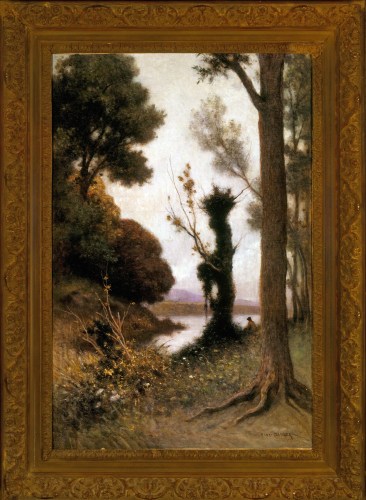Henri-Camille Danger was born January 31, 1857 in Paris. He was a known for his paintings of historical, mythological, allegorical, genre, and landscape scenes as well as cartoons for tapestries and pastels.
Danger studied at the École des Beaux-Arts in Paris under Jean-Léon Gérôme (1824-1904) and Aimé Millet (1819-1891). He exhibited at the Paris Salon from 1886 through 1937. In 1887, he was awarded the prestigious Prix de Rome for his painting The Anger of Achilles Relieved by Minerva. He was a member of the Sociétaire des Artistes Français from 1899 onward. In 1900, he was awarded the silver medal at the Exposition Universelle. In 1903, he was made a Chevalier in Légion d’Honneur.
Danger revived the historical genre that had been popular at the beginning of the nineteenth century. Among his submissions to the Salon were many historical paintings, such as The Conference of the Hague (1903), allegorical themes, like The Great Artisans of Arbitration and Peace, as well as mythological subjects, like Venus with Two Presents of 1937. When his painting, The Great Artisans of Arbitration and Peace debuted at the Salon of 1898, Danger boldly dedicated it to Alexander III of Russia, an ironic reference to the recently deceased Russian autocrat’s many cruel practices, including his persecution of Russian Jews.
Danger was just as well known for his intimate genre scenes and landscapes inspired by the Italian countryside. Danger also produced a number of “cartoons,” or drawings for tapestry designs, for the Gobelins manufactory, also known as the Royal Factory of Furniture to the Crown. He also painted the Aurora Borealis on the ceiling of the town hall in Paris.
Danger died in 1937.

